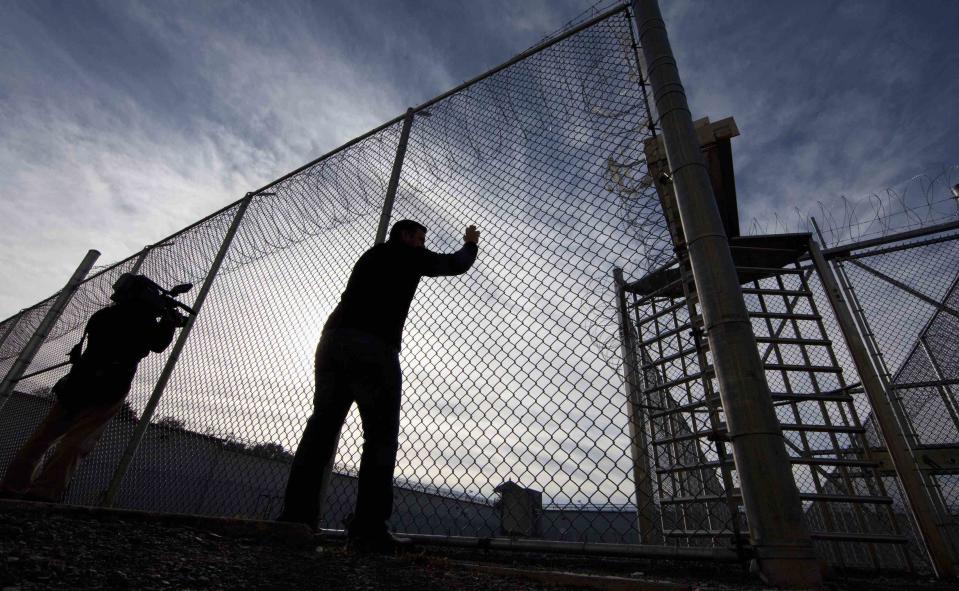 Daily Brew
Daily BrewOntario forced to reveal sex offenders’ postal codes, though not addresses

Ontarians can now get at least a rough idea of where sex offenders live in their province, thanks to a long legal battle waged on their behalf by a media organization.
Ontario's Ministry of Community Safety and Correctional Services has been forced to provide Global News with a database of sex offenders by postal code following a ruling by the Supreme Court of Canada.
The provincial government spent six years fighting an access-to-information request from Global after Ontario's information and privacy commissioner ruled the network could have the information.
The Ontario Superior Court or Court of Appeal upheld the commissioner's ruling but it took Canada's high court to pry loose the information.
"Three different Courts have now sided with my office on this issue, which is a good indicator that we were on the right side of this matter," Commissioner Dr. Ann Cavoukian said in a news release. "It is truly unfortunate how many years and resources have been wasted on this pursuit."
In its ruling, the Supreme Court said the commissioner's decision on access requests "deserve deference," and that in the past the court has recognized the office's expertise in weighing privacy rights in a law-enforcement context.
[ Related: Privacy watchdog slams Toronto police for sharing suicide-attempt reports with U.S. ]
Aside from giving citizens information about where potentially dangerous offenders live, the ruling has a broader impact across Canada on what information governments can withhold, Cavoukian said.
"What this means is that a 'trust me' model will no longer suffice: institutions must now demonstrate a reasonable expectation of probable [not possible] harm, which must be based on something other than a mere belief," she said.
"In short, the court stated that all provincial FOI statutes that employ the same language should adopt the 'reasonable expectation of probable harm' test, which requires proof well beyond the level of mere possibility. The Supreme Court ruling is a vote in favour of transparency, and, in turn, privacy."
Cavoukian told Global News the government's continued legal resistance to her initial ruling was an "unbelievable" waste of taxpayer dollars. Given strong decisions in the lower courts, the Supreme Court appeal had almost no chance of success.
“There was no risk to personal privacy, so privacy was not an issue," she said. "There was no public safety issue here.”
The government had argued publishing the data could lead to the identification of registered sex offenders, though it was never able to provide evidence of this.
U.S. publicly available sex-offender registries often include detailed information such as home addresses and sometimes resulted in offenders being attacked. But the data Cavoukian authorized for release is limited to the postal codes where offenders live.
For instance, said Global News, the Woodbridge postal area has 20 sex offenders living among 55,000 residents.
[ Related: Harper’s proposed public child-sex registry part of Ottawa’s larger crackdown on predators ]
Ministry spokesman Greg Flood said in an emailed statement to Global News the government respects the Supreme Court decision "and is focused on keeping our communities safe as we work to comply with the information and privacy commissioner’s order."
“As long as it doesn’t identify individuals, it’s good,” Catherine Latimer, executive director of the John Howard Society, which speaks for offenders, told Global News.
“Information, generally, is good. I don’t think you gain anything by not having adequate access to information. “
The ministry said 97 per cent of sex offenders register their home addresses with police as required.
The data map created by Global News, based on information as of April, showed Hamilton has the densest concentration of sex offenders in the province.
"Most of inner-city Hamilton has high rates of sex offenders, with about 200 living below the Mountain," Global News said. "The western part of central Hamilton, along York Boulevard, has southern Ontario’s densest concentration of sex offenders."
In Ottawa, offenders are concentrated in the suburb of Vanier. Northwestern Ontario has high rates of registered offenders, with 122 in a population of just over 16,300 in a stretch from Kenora to Hudson Bay.
Not surprisingly, sex offenders tend to live in low-income neighbourhoods.
“Most people who are reintegrating back into communities after a period in prison are not particularly wealthy,” Latimer told Global News.
“They have difficulty functioning and getting jobs, so they’re lower-income people. A lot of them are getting dumped into homeless shelters when they’re released – it’s not good.”
One argument the government made for withholding information was that releasing even postal-code data would lead to "community unease." But Latimer noted most offenders victimize people in their immediate circles, not strangers.
“What makes people anxious is stranger sexual assault," she said.
"People feeling vulnerable walking down the street, or vulnerable because they’re worried about their kids not coming directly home from school, that kind of thing. But most sexual offences occur among people who know each other.”
That begs the question of why the general public needs to know that sex offenders live among them (presumably so do burglars, car thieves and killers)? But Global noted a 2001 study found about a quarter of all sexual offences involve attacks on strangers, falling to 16 per cent when the victims are kids.
The same study also found less than 10 per cent of released Ontario sex offenders were convicted of a new sexual offence in the three and a half years following their release.
"What Global’s map reveals, more than anything else, is that existing side-by-side with criminals and ex-criminals is just an inescapable fact of city life," Toronto Life commented. "Most of us will be fine."


